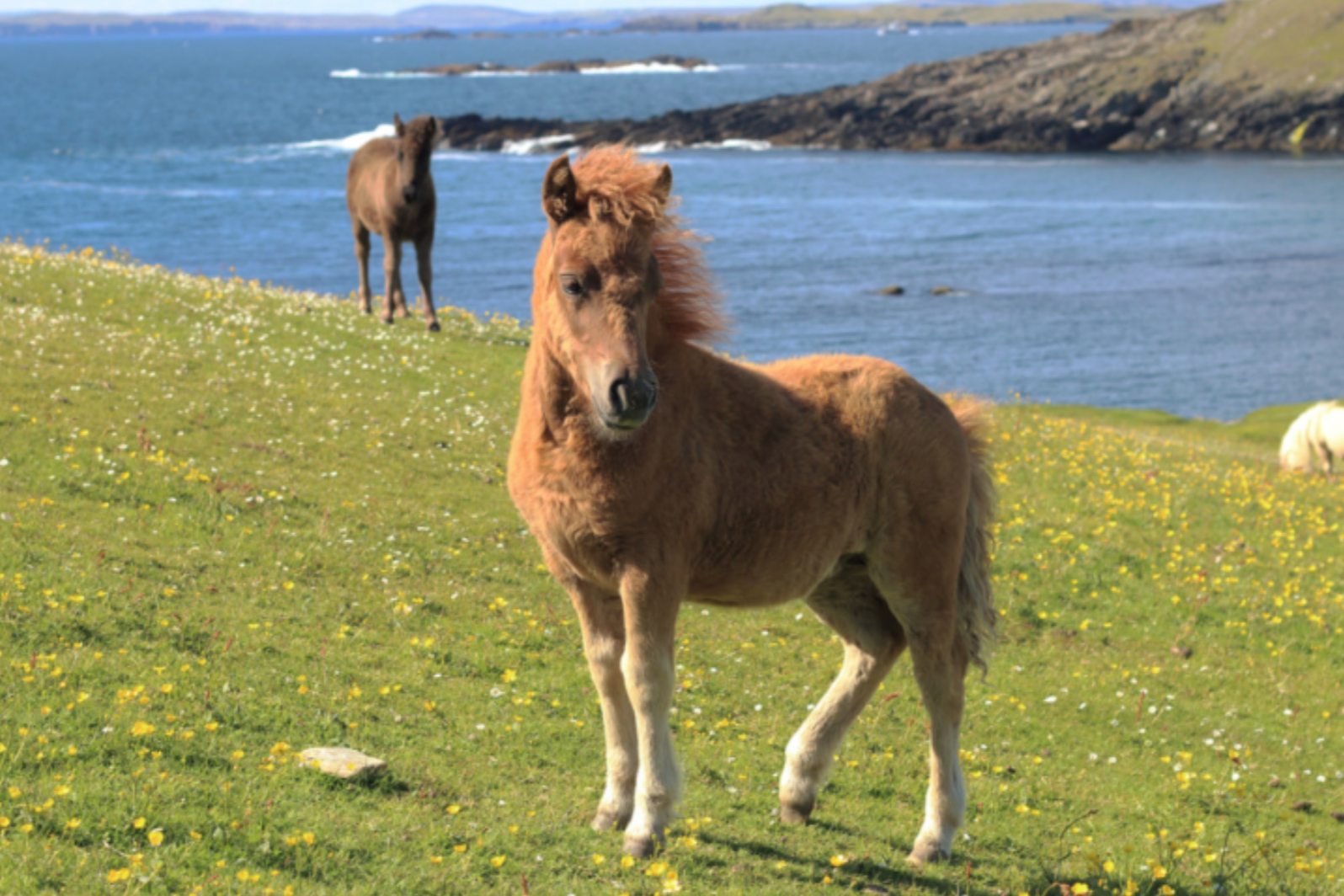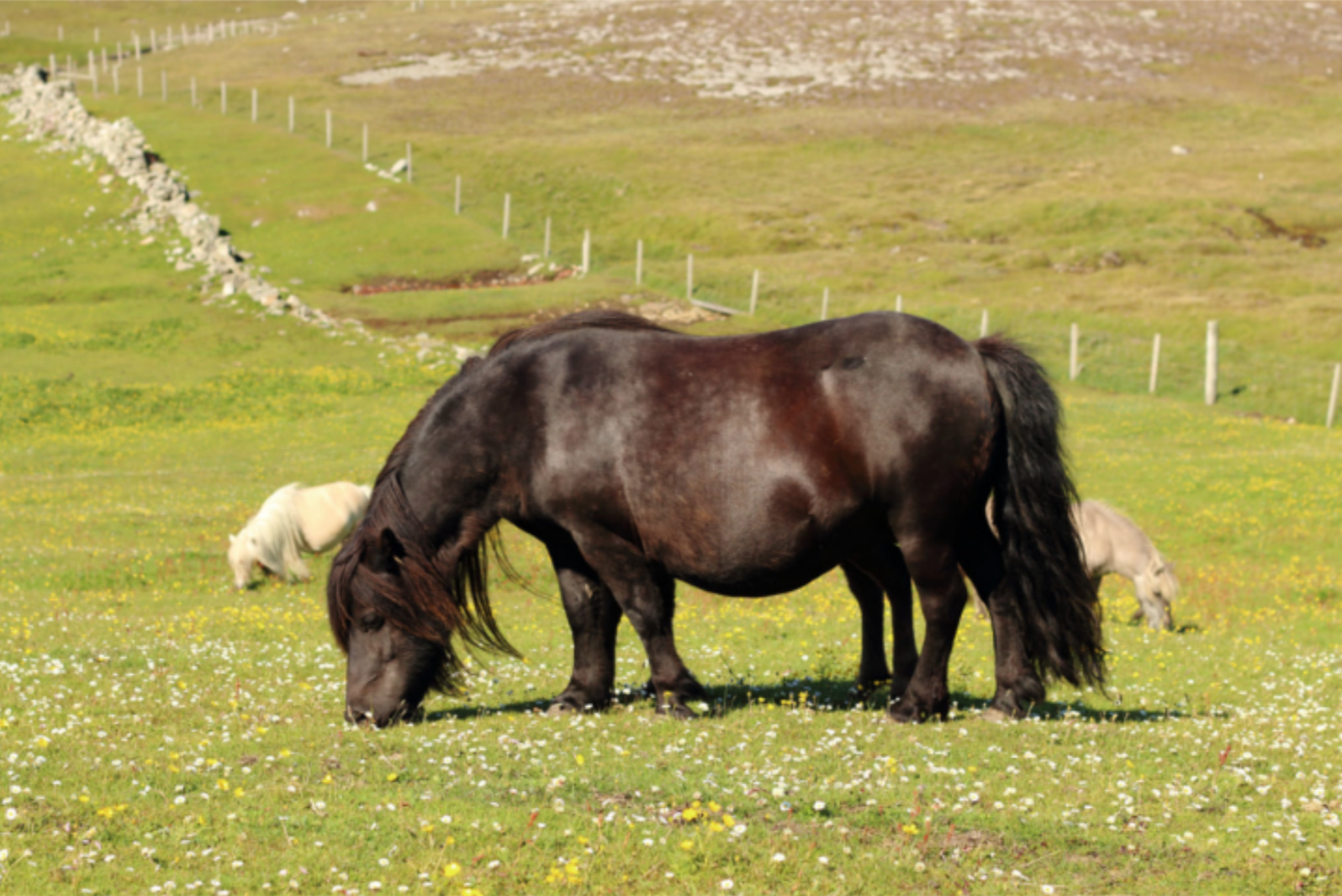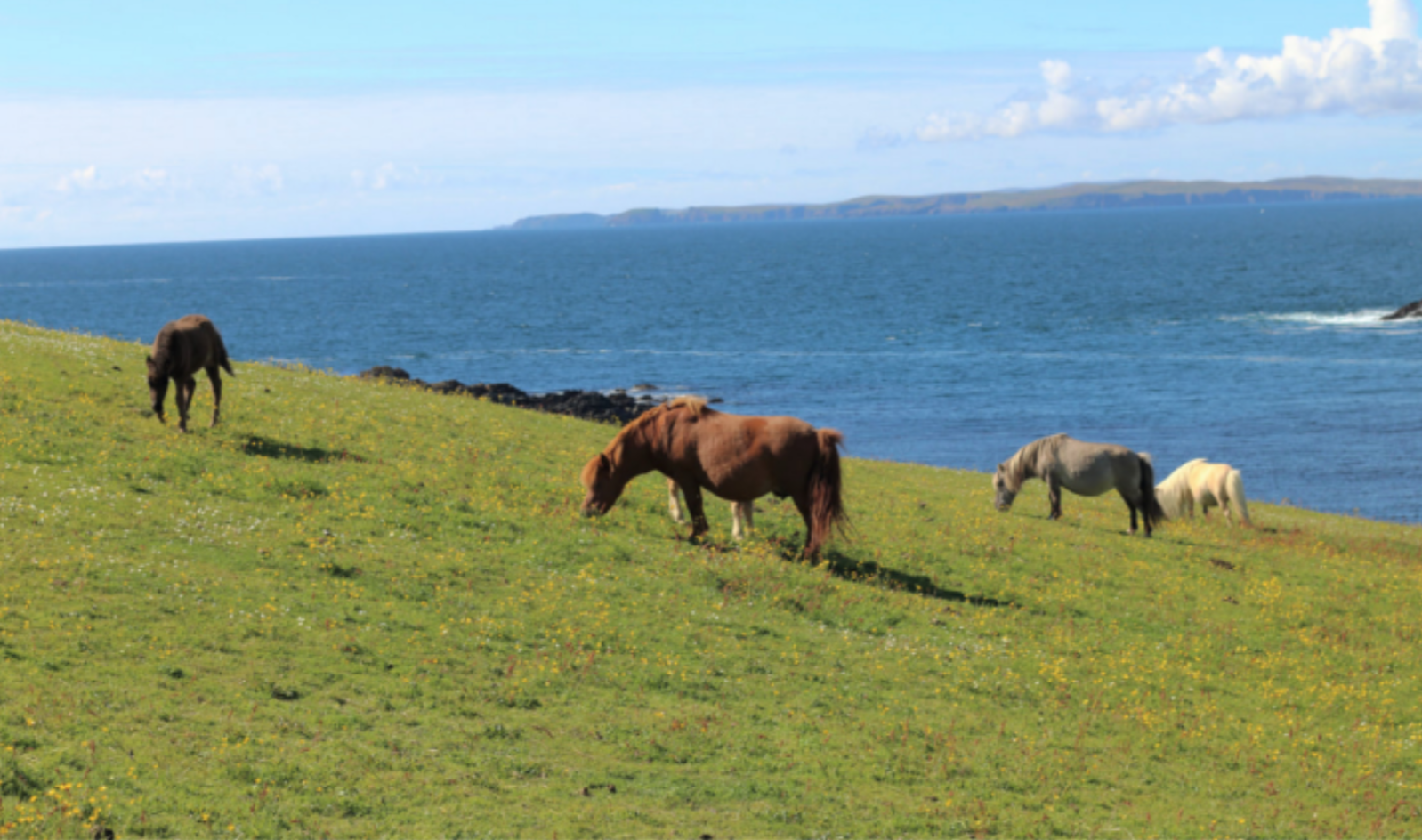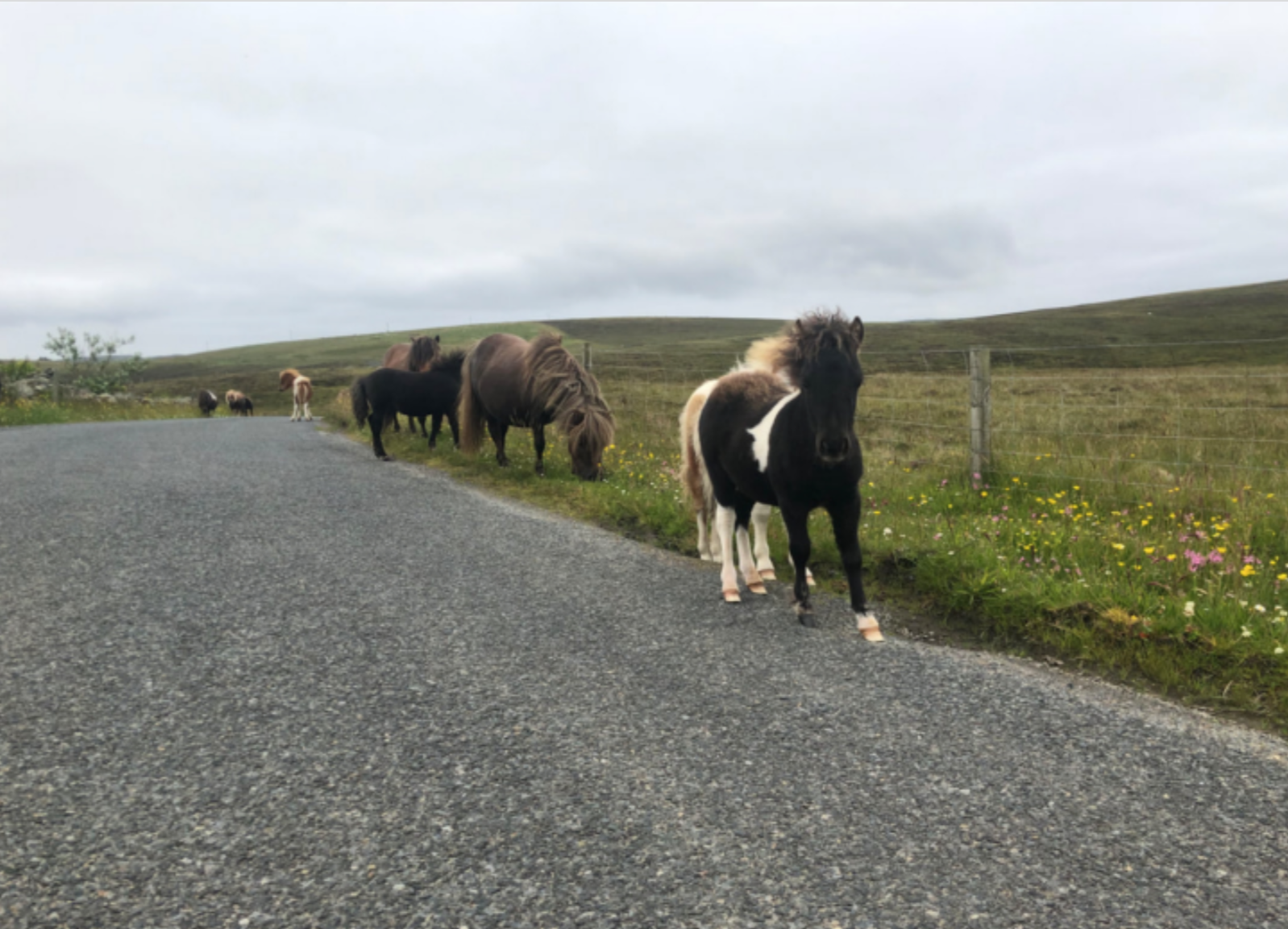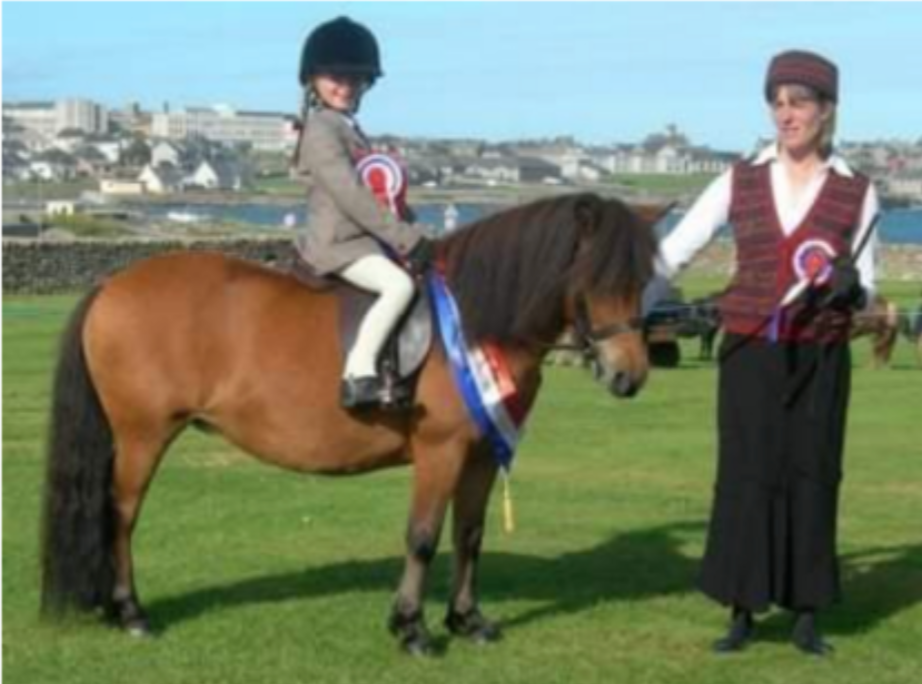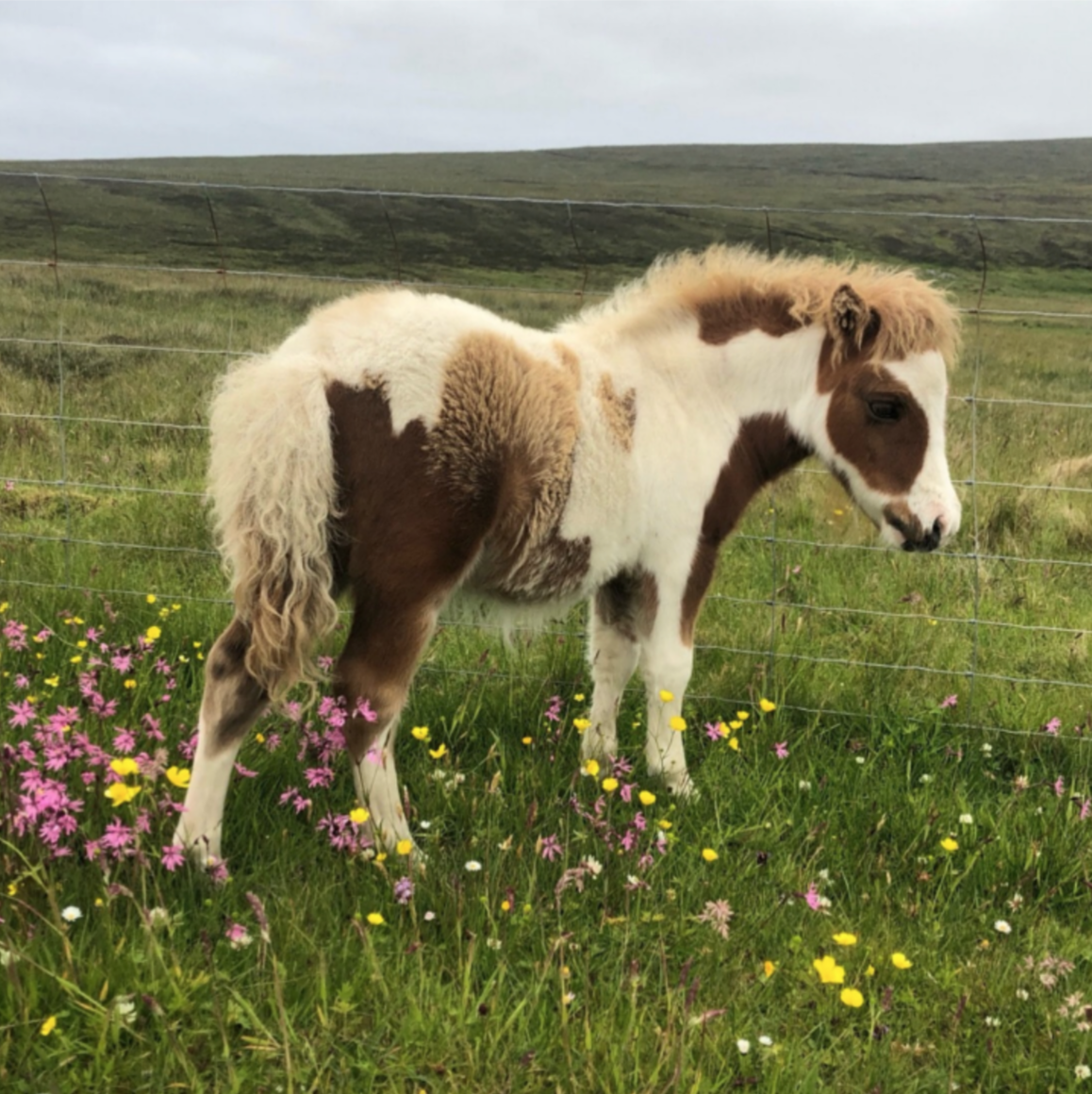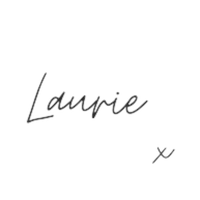Shetland Ponies: A brief history
“A little barrel-bellied broad-backed equuleus, of a brown or black colour, that is no larger than a donkey”
This is the description of a Shetland pony, written by Samuel Hibbert on his tour of Shetland in 1822 after encountering the native breed of pony, unique to Shetland.
The discovery of a leg bone in excavations at Jarlshof demonstrate that ponies date back as far as the Bronze Age, some 3-4,000 years ago; evolving into a breed which is unique to Shetland. This blog will explore the history of this fascinating breed and their use today.
Shetland ponies are most-notably very hardy, stout, strong and sure-footed. They have adapted remarkably well to Shetland’s often harsh environment, and as a result, need minimum care. They are able to live happily outdoors all year-round and they prefer the rough grazing which dominates the landscape.
Adapting to the harsh climate in several ways, they are small and stout, ranging between 28 and 42 inches, they also have large feet, perfect for negotiating boggy ground, and a double-layered coat of hair ensures they are entirely waterproof, warm and dry in winter. This coat is shed in the summer and can make the pony look a bit shabby as they moult!
Hibbert’s description of the winter coat and their sometimes scruffy outward appearance is worth noting. He says that “the long shaggy hair with which he [the pony] is clothed, has more the appearance of a Polar dress, or of some Arctic livery, specially dispensed to the quadruped of Hiatland [Shetland]” He also describes the mane as one that “no comb was applied” and “it was left to nature’s care, ‘ruffled at speed, and danc’d in every wind”.
Their unkempt appearance is often noticed by visitors and I’m often asked if the ponies are neglected. They are certainly not neglected, every pony in Shetland has an owner and they are very well caerd for, each one being micro-chipped and even having individual pony passports! Their rugged appearance this is actually one of their unique defence mechanisms, specially developed to suit the environment in Shetland and, once the winter coat is shed, the short summer one has a beautiful silky-sheen.
There are three types of Shetland pony; miniature (28-34”), midi (34-38”) and standard (38-42”). They come in all different colours and pattern, although never will the colouration and pattern be leopard-spotted. Most common colours include named variants such as skewbald (red and white) and piebald (black and white) black, bay and chestnut.
Ponies are long-lived with many reaching into their 30s and beyond, one of the most common problems is that they develop a condition called laminitis which occurs if they are fed a diet too high in non-structural carbohydrates – in other words, they can’t have too much green grass in summer! The rough grazing provided from a Shetland hillside is ideally suited to allow them to thrive.
Traditionally ponies would have been used on the croft [traditional smallholding] for general-work; tasks such as carrying, especially peat, which was used for burning for heating and cooking (see blog about peats). Oxen were the preferred choice for ploughing, although not exclusively used as ponies could pull ploughs too. In the days before our road network, ponies provided good transport overland where a boat couldn’t be used.
Ponies were also exported to overseas markets and used in mines – their small stature and strength making them perfect in narrow confines and mine shafts. In the 1850s new legislation banned the use of children in coal mines. As a result, ‘pit-ponies’ were introduced to mines. Black, male Shetland ponies were the ideal ‘small-horse’ for the job as they were very strong, capable of carrying twice their own weight and able to fit into narrow, dark and dusty mine-shafts. George Low (visiting Shetland in 1774) described them as being “excellent work beasts, capable of enduring much fatigue”.
Over the years,thousands of ponies were sent to the mines throughout Britain and America, working underground, hauling carts. The last mine using ponies closed in 1971 and was in America.
During the 17th and 18th centuries, ponies were hired out to Dutch fishermen at a rate of a stiver a mile to provide the seamen with some exercise. Doctors who travelled with the Dutch fleets encouraged this type of activity for the men who went ashore after months at sea. One incident tells of a tragic accident when one of the ponies failed to stop whilst racing up to the Knab in Lerwick. Both rider and pony went over the cliffs and to this day, the spot is still known as the ‘Dutchman’s leap’.
As with any breed, regulations keep close scrutiny on the stock and ensure that the breed remains true. The Shetland Pony Stud Book Society was formed in 1890 with an aim of ensuring purity and retaining a high-quality animal. ‘Jack of Noss’ was the first pony to be logged in the Stud Book and most ponies today can be traced back to his ancestry. Noss (an island off Shetland’s east coast, at the back of Bressay) was a large pony breeding stud in the 19th century. Operated by the Marquis of Londonderry, they exported the majority of ponies from Shetland at that time, although other studs did export, including many from Berry Farm in Tingwall. Today every pony bred in Shetland must have a microchip and passport in order to confirm authenticity.
Shetland ponies are still immensely popular today, with over 100 breeders still active and around 1,000 ponies in the islands. Although mechanisation has replaced them on the croft, they are still used for riding. They are very good for teaching children how to ride as they are small, gentle and (generally!) good-tempered, providing a good starting point for those wishing to ride.
Shetland pony competitions are common with many youngsters participating in riding competitions, both within and outside Shetland. Shetland riders also participate in the annual ‘Shetland Pony Grand National’ at the Olympia Stadium in London.
Melody Goodlad competing at Olympia in 2012 on her Shetland pony.
Shetland ponies also make very good companions for horses. They are sociable creatures and enjoy the company of other ponies or horses. But most of all they are known for their cheeky temperament and good-natured personality – along with a big dash of stubbornness thrown in for good measure! My cousin Bronagh, who has ridden horses and ponies since she was a toddler, says that “They're well known for being very cheeky, if any of our horses were going to escape the park or take a nip at you it was the Shetland, and I've seldom fallen off our horses, but the Shetland kept us on our toes and you learnt to ride well because you quickly learnt how to stay on!”
Today ponies can still be seen extensively throughout Shetland. They often appear to roam wild, seen in the hills, the roadsides, beaches and heathery hills, although, despite this, they are all owned and tended to regularly. Foals are born in May and can be sold at six months old when pony sales are held in October. One quote which sums up the pony perfectly is that they “are foaled in the fields, live in the fields and die in the fields”.
Ponies popularity with visitors means that they are often used in tourism. There is very little money in keeping ponies generally, but some are used as attractions for visitors to see and that helps pay for some of their annual upkeep. But, most of all, they are kept out of love for the breed and the desire to maintain the lineage bred from Jack of Noss.
Despite their small stature and unassuming nature, these small native ponies remain one of the most easily recognisable, iconic creatures, readily associated with Shetland. The fact remains, many people will know a Shetland pony to see yet will have little idea about the ‘Shetland Islands’, these guys truly are world-famous and will continue to thrive on the hillsides of Shetland for many generations to come.
Until next time,
Stay safe,
“Visitors want to have the best experience; they want to see Shetland through the eyes of a local. They want to taste the salt on their faces, smell the sea and bear witness to the wind in their hair. They want to drink in the sights, the smells and the sounds of an island community. They want to be shown the places they would otherwise not discover. They want to piece together the fascinating jigsaw and truly discover Shetland; this is the trip they have dreamed of.”

